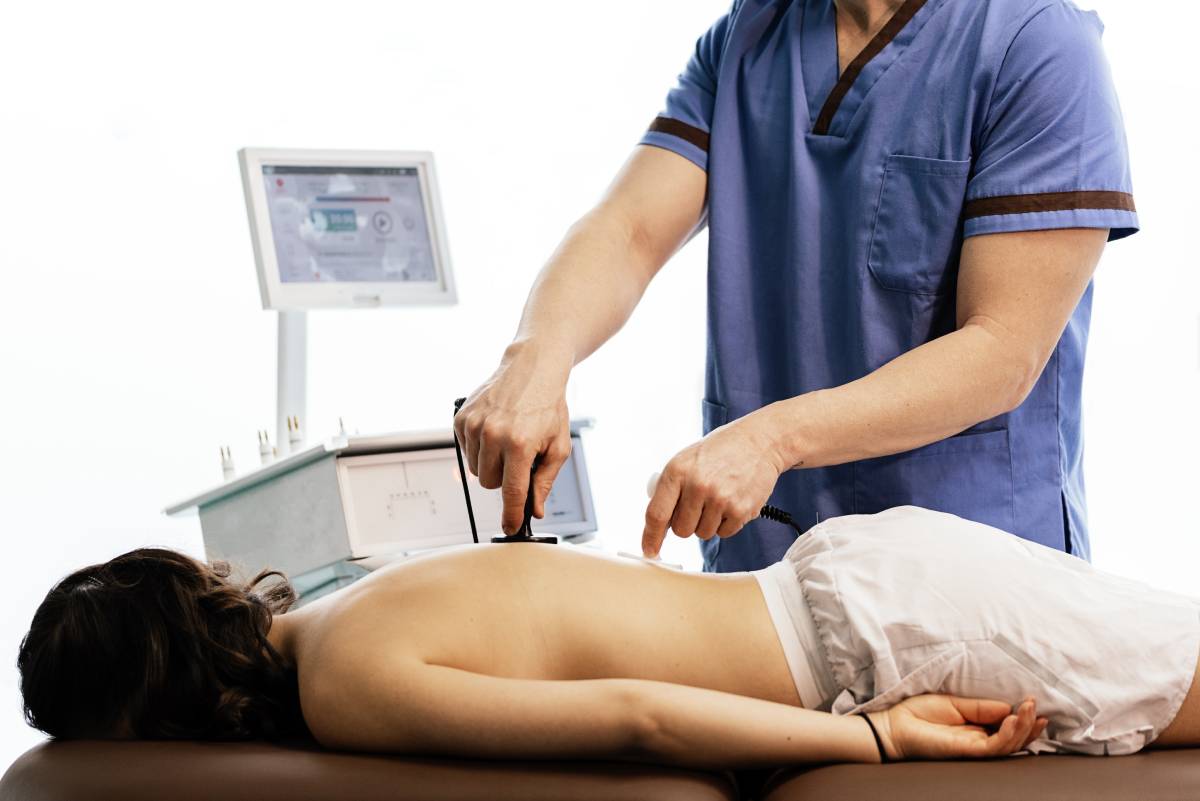More than half of all adults will experience back pain in their lifetime [1,3], spurring the development and implementation of various techniques in chiropractic care. These may involve “pharmacological interventions, physical exercise, and modalities including electrotherapy, cold, and heat therapy” [3]. While each of these techniques may be prescribed on its own [2], some research suggests that there is greater efficacy when the therapy involved is multidisciplinary [6]. One popular supplement for chiropractic care is diathermy, “a therapeutic treatment most commonly prescribed for muscle and joint conditions, [which] uses a high-frequency electric current to stimulate heat generation within body tissues” [4]. The heat generated by diathermy is believed to help increase blood flow, mitigate pain, improve flexibility, and accelerate the healing process of damaged tissue [1,4,6].
The three main types of diathermy are shortwave, microwave, and ultrasound [4]. Shortwave diathermy produces heat through electromagnetic energy, either pulsed or continuous [4]. Said to help reduce inflammation, shortwave diathermy is typically used in patients experiencing pain or muscle spasms caused by conditions such as kidney stones, osteoarthritis, sprains, and strains [4, 5]. Microwave diathermy, however, uses electromagnetic waves in the microwave range to generate heat. Because it does not penetrate as deeply as shortwave diathermy, though, it is often applied to more superficial areas of the body, since it warms tissue evenly without heating the skin [2,4]. Conversely, ultrasound diathermy is used more for deep tissue, generating heat through sound waves, which vibrate the tissue and, in turn, promote blood flow to the targeted area [4]. It may be prescribed to patients presenting with musculoskeletal sprains, joint contractures or adhesions, and muscle spasms [4].
“For ultrasound diathermy,” as described in a Healthline article, “the therapist applies a gel to the affected area of your body, [then] moves a wand continuously over the affected area” [6]. Shortwave and microwave diathermy, on the other hand, do not require gel, but instead are typically administered through electrodes placed over the affected area [6]. Sometimes a towel is placed between the electrodes and the skin to avoid direct contact [6].
In a study examining the efficacy of diathermy treatment in patients with chronic low back pain (CLBP), Durmas et al. found that microwave diathermy combined with physical exercise was beneficial. However, they determined it was not superior to exercise alone [3]. Research performed by Ahmed et al., highlighted several studies that showed significant improvements in patients receiving shortwave diathermy treatment for CLBP and neck pain, concluding that “shortwave diathermy is an effective modality in the treatment of the patients with chronic low back pain” [1]. They also found that deep heat was more effective than superficial heat for the treatment of CLBP [1]. Similarly, a study done by Zati et al. determined that deep heating therapy, through medium-frequency (450–1000 KHz) waves diathermy, appears to be effective in patients with nonspecific CLBP, and thus suggested that it could be a positive addition to a patient’s therapeutic regimen.
The research conducted by Andrade et al. aimed to observe the efficacy of microwave diathermy in patients presenting with nonspecific neck pain. Despite the rising popularity of microwave diathermy, their study suggests that it “provides no additional benefit to a treatment regimen of chronic neck pain that already involves other treatment approaches (e.g., exercise, TENS)” [2]. While they, like others, add that more research is needed to better understand the efficacy and benefits of diathermy treatment as an independent modality [2,4], most studies seem to suggest that it could potentially be a useful supplement for chiropractic care.
References
1. Ahmed, M. S., Shakoor, M. A., et al. (2009). Evaluation of the Effects of Shortwave Diathermy in Patients With Chronic Low Back Pain. Bangladesh Medical Research Council Bulletin, 35(1), 18–20. DOI: 10.3329/bmrcb.v35i1.2320
2. Andrade Ortega, J. A., Cerón Fernández, E., et al. (2014). Microwave Diathermy for Treating Nonspecific Chronic Neck Pain: A Randomized Controlled Trial. The Spine Journal, 14(8), 1712–1721. DOI: 10.1016/j.spinee.2013.10.025
3. Durmus, D., Ulus, Y. et al. (2014). Does Microwave Diathermy Have an Effect on Clinical Parameters in Chronic Low Back Pain? A Randomized Controlled Trial. Journal of Back & Musculoskeletal Rehabilitation, 27(4), 435–443. DOI: 10.3233/BMR-140464
4. Giorgi, A. “Diathermy.” Healthline. (2017). www.healthline.com/health/diathermy
5. Wu, C.-L., Yu, K.-L., et al. (2009). The Application of Infrared Thermography in the Assessment of Patients with Coccygodynia Before and After Manual Therapy Combined with Diathermy. Journal of Manipulative and Physiological Therapeutics, 32(4), 287–293. DOI: 10.1016/j.jmpt.2009.03.002
6. Zati, A., Cavazzuti, L., et al. (2018). Deep Heating Therapy via MF Radiowaves v. Superficial Heating Therapy in the Treatment of Nonspecific Chronic Low Back Pain: A Double Blind Randomized Trial. Journal of Back & Musculoskeletal Rehabilitation, 31(5), 963–971. DOI: 10.3233/BMR-170944
